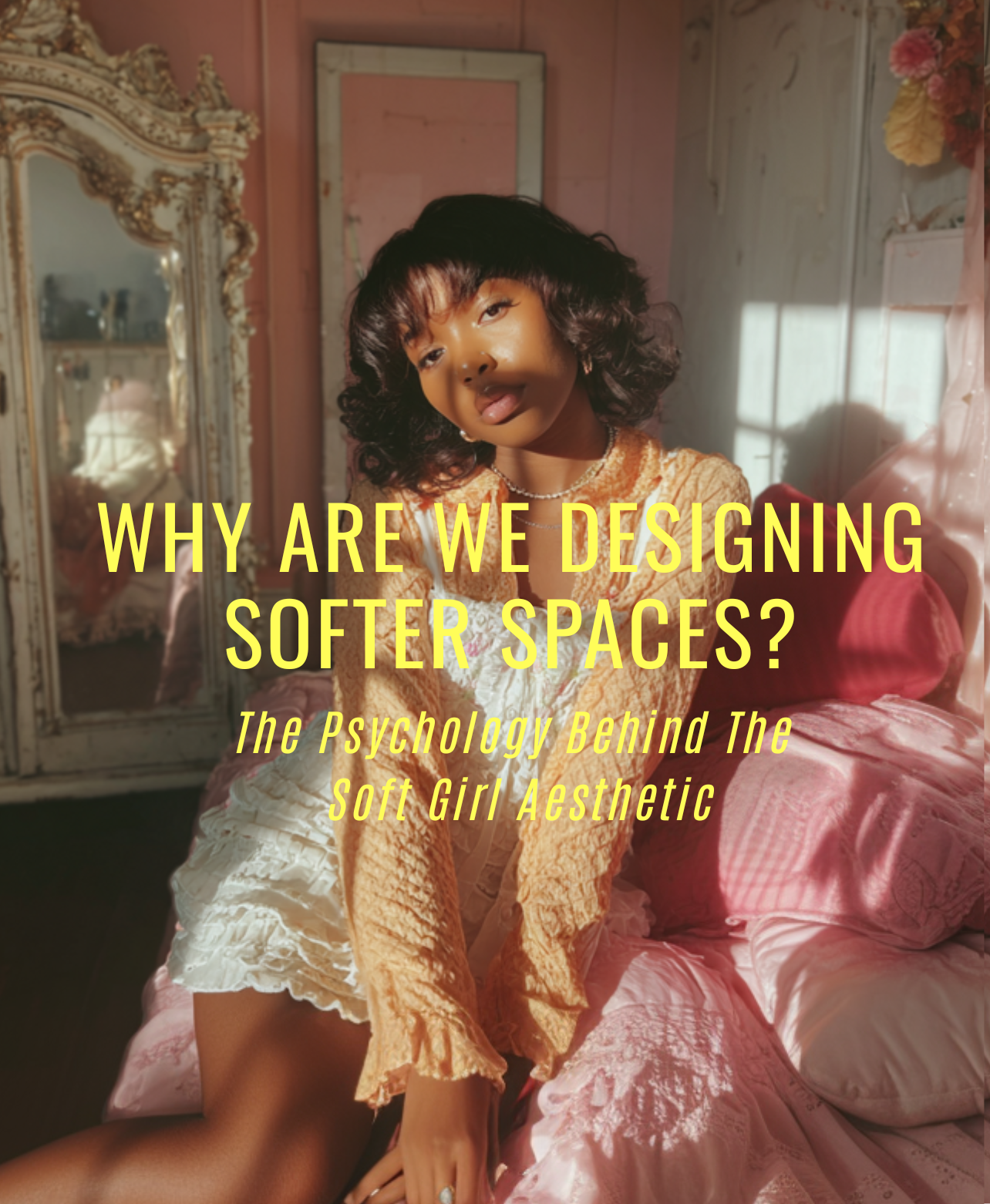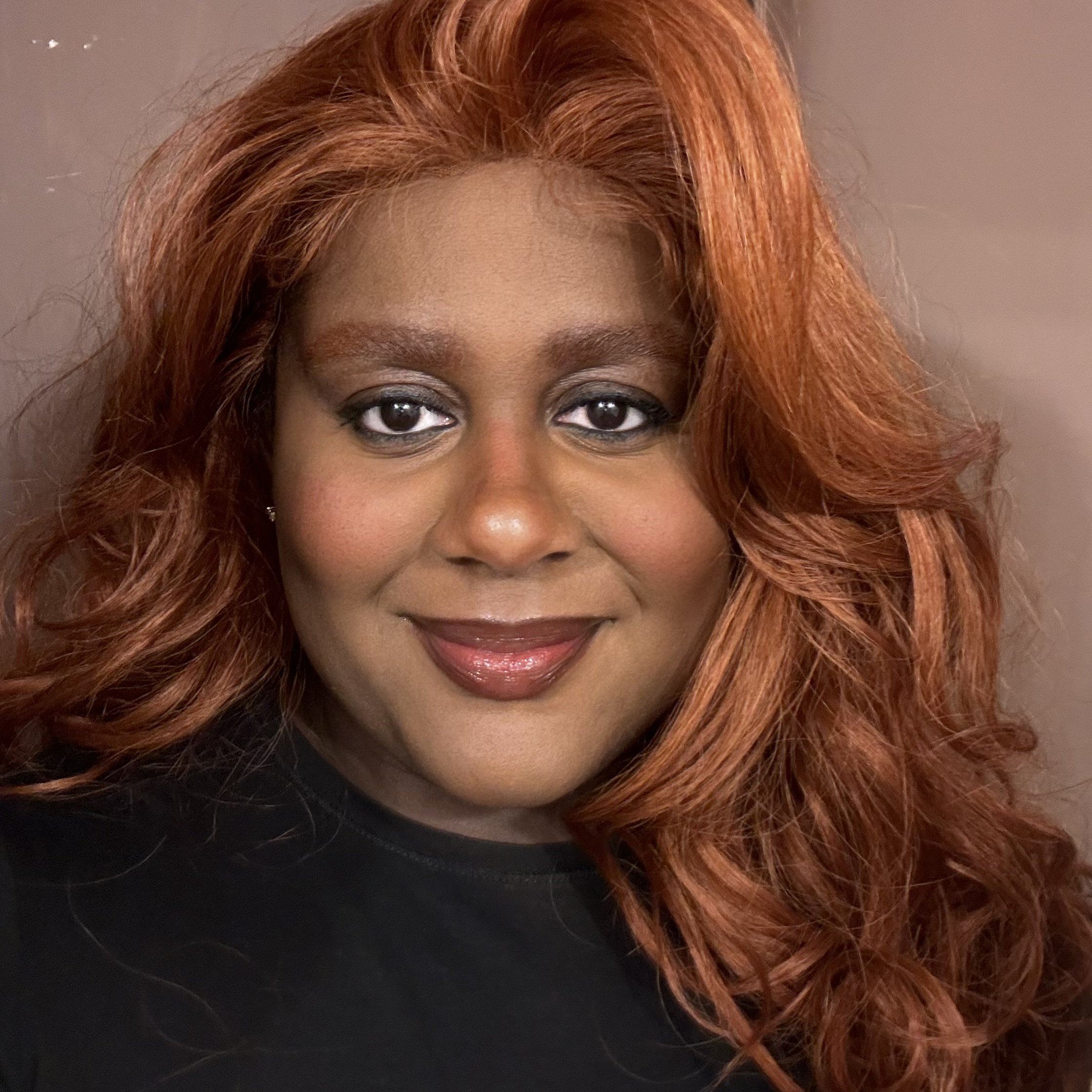Why Are We Designing Softer Spaces? The Psychology Behind the Soft Girl Aesthetic
Image by Trulery via Midjourney
Trigger Warning: The following piece contains references to sexual abuse, which may be distressing to some readers.
The millennial “girl boss” isn’t dead, but she may have turned up to work in something more frilly this morning. As the world turns back towards hyperfemininity and traditional gender roles, new subcultures are born—and the “soft girl” is perhaps the most striking from a psychological perspective.
The most interesting element of the soft girl is the balance between orthodoxy and zeitgeist. The soft girl’s ethos is about creating a life they enjoy, not endure, unlike the women of the past who were expected to. There is romance, but it doesn’t take priority over happiness—it enhances it. The soft girl is also a “girl’s girl”, forming deep bonds with other women and refusing to view them as competition for resources or partners. It praises successful women in the public eye who have chosen quiet, enjoyable lives without forsaking their aspirations, relationships, or femininity like Zendaya, or Naomi Osaka who made headlines in her coquette-inspired custom tennis outfit designed by Nike.
Image by Trulery via Midjourney: Bows and puffy sleeves characterize the soft girl aesthetic.
The wider return to hyperfeminine styling also suggests that Generation Z’s attitudes towards women have changed. They’re more accepting of traditional gender expression and less quick to equate softness with weakness. A 2013 study by Kristina M Zosuls et al. on gendered dress and gender development, published during a different cultural moment when gender was more broadly accepted as stable, found that children who felt good about their gender, and understood it as an important and stable part of who they are were more likely to wear gender-typed clothing. While today’s gender conversations are more varied, this connection between positive gender identity and gendered dress offers helpful insight into the enduring ways women are expressing their hyperfemininity.
Brands have been quick to capitalize on this, with Hello Kitty, a soft girl icon, now shifting from a children’s market to young women beyond East Asian circles, thanks to Tiktok. Greta Gerwig’s Barbie movie tapped into the hyperfeminine style, keeping the fun, girly fashion and dreamy interiors while adding adult themes and feminist undertones that attracted a more mature audience.
Image by Trulery via Midjourney: Feminine touches like skirted sofas, pastel walls and floral curtains and carpets add romance to prim and proper living rooms.
“On Etsy, sales for ruffled items including curtains, blankets, and throw pillows have doubled, while coquette bows are up 500%,” Dayna Isom Johnson, Etsy Trends Expert says.
But with the rising popularity of kawaii culture, the Japanese aesthetic that embraces all things charming, playful, and cute, like Hello Kitty, there is a risk of self-infantilization or even sexual abuse without healthy parameters. Child-like media can quickly become inappropriate under the “lolicon” genre which infantilizing and eroticizing underaged girls, feeding into harmful stereotypes and fetishes about young women and girls.
Image by Trulery via Midjourney: cozy, lived-in spaces and pastel clothing with traditional prints create an emotionally soothing, nostalgic look that capture the soft girl aesthetic.
The soft girl aesthetic also connects to a desire for “simpler times”. Grand architecture and interior design have been imprinted in our minds since childhood. Whether it was Cher’s house in Clueless or Mia’s bedroom in Princess Diaries 2, those on-screen spaces captured our attention, and offered an escape from thoughts of recessions, international conflicts, and our personal drama.
Image via Beyza Nur Kocaosmanoğlu: Faded glamour adds romance to the soft girl aesthetic.
That same longing for beauty and comfort is what draws many to period dramas. We love the ornate drawing rooms of the Bridgerton household, and Jane Austen made us envy Lizzy, a free-spirited woman who marries a stubborn but surprisingly romantic aristocrat. And that’s why she manages to get her way, all while living in a world of softness and romance that echoes the soft girl aesthetic.
Still, it’s key to remember that these stories offer a heavily romanticized perspective of history and hypergamy, or “marrying up”. Although we may hope to be Lizzy, most of us would be lucky just to be Charlotte, married off to someone who deems a potato “an exemplary vegetable”. While the soft girl aesthetic revels in beauty and comfort, it can also romanticize dependence, leaving little room to question who holds the power in those stories.
Image by Trulery via Midjourney: Faux fur blankets, throw pillows, soft bedding, and fresh pastels provide glimpses of the soft girl aesthetic.
What’s more, hypergamy, when pursued without an understanding of the power dynamics at play can be harmful. In a viral video entitled, “I Married a Monster”, one woman, allegedly inspired by hypergamy content creator Shera Seven, married a wealthy partner, only to find herself in a physically and sexually abusive relationship. She ultimately chose to leave after discovering physical signs of sexual abuse on her young children.
If you or someone you know is experiencing abuse, we’ve included resources at the end of this article that can offer professional help.
Image via Maria Orlova: Boho-inspired rooms often set the back drop for the soft girl aesthetic.
At its heart, the soft girl aesthetic’s nostalgic appeal is a form of escapism that can offer a healthy way to self-soothe. Pamela B. Rutledge Ph.D., M.B.A. explains in Psychology Today that “our brains love symmetry and completion” which explains why we’re drawn to the “comfortingly predictable patterns of this genre.” It’s all about brain chemistry. “Our brains are busy luxuriating in the release of mood-impacting neurotransmitters, like cortisol, dopamine, and oxytocin as we respond to the challenges, betrayal, romance, and, of course, the happy resolution of the narrative arc, making an emotionally satisfying journey.”
Rutledge goes on to say that period dramas can be a powerful form of self-care, especially during times of isolation, anxiety, or uncertainty. She notes that while vaccines have helped us move toward post-COVID normal, many people sill turn to those comforting stories to find relief in an unpredictable world.
Image via Jackson Sears: Cane and curves are another hallmark of soft girl aesthetic.
That said, excessive escapism isn’t healthy. It’s important we stay in touch with reality and resist using style to conceal difficult or dangerous circumstances. Home should feel like a pink cave, not a pink cage.
Beyond the risks, soft girl style with suitable guardrails can be an extremely helpful tool in meeting needs. Looking at the soft girl lifestyle through the lens of Maslow’s hierarchy, the soft girl’s striving for a life of softness, comfort, and self-expression whilst maintaining a sense of self is great for self-esteem and self-actualization— aka becoming the fullest version of yourself. Embracing femininity can attract others who are equally comfortable with their own, fostering genuine connection and a sense of belonging. It also builds the independence needed to meet and protect your emotional, physical, and safety needs on your own terms. Because every girl deserves a space that feels like hers — and yes, that might just include a French poster bed.
Image via Katarzyna Grabowska: Floral lampshades and moody lighting set the tone for soft girl romance.
What do you think of soft girl design? Let us know in the comments below!
Helplines
National Sexual Assault Hotline: 800-656-4673
National Domestic Violence Hotline: 1-800-799-7233
National Suicide and Crisis Lifeline: 988
Substance Abuse and Mental Health Administration (SAMHSA) Helpline: 1-800-662-4357
This is an ongoing series exploring fashion and design psychology. Support contributors and keep TruForm interviews going by joining us on Patreon.
Written by Cheyenne
Cheyenne is a lifestyle writer with a particular interest in fashion, interiors and culture.










